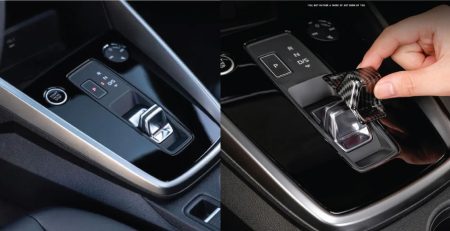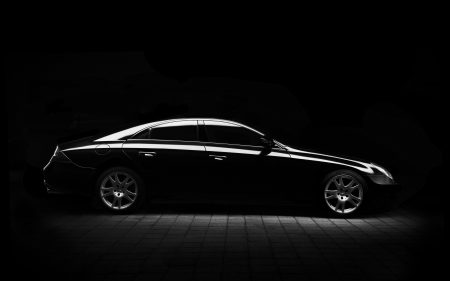Reasons Why You Should Change your Air Intake System Even If Your Car Is Brand Spanking New
For quieter operation for your air intake system, OEM air filters and intake tubes have restrictive curves and bars. We’re talking about how power and mpg are hurt, and why it’s never too soon to upgrade.
Aftermarket air intake systems have become one of the most popular engine modifications for cars and trucks of late models. One easy question is why are they so popular? After all, didn’t engineers who work for your vehicle manufacturer spend years developing the best engine components available? Since power and fuel economy are major points of sale these days, it is difficult to imagine that car companies do not do everything they can to maximize horsepower, miles per gallon or both.
The truth is that typical air filtration systems are designed as a compromise on most OEM vehicles. And because of this, you miss the power and kilometers you can easily gain. In the scope of this article, we’ll explain what aftermarket air intakes do, and why installing one in place of your factory air hose, filter, and air box makes good sense -even if your car is brand new. In fact, especially if it’s brand new -because you’ll have the most amount of time possible to enjoy the benefits.
The Basics
An internal combustion engine is essentially a large air pump. Air, which mainly contains oxygen and nitrogen, is pumped into the cylinders of your engine along with fuel during the intake stroke, compressed and burned during compression and power strokes, and then forced out during the exhaust stroke as spent gases. Any resistance to the free flow of gasses during intake or exhaust strokes robs the power of your engine, which is why aftermarket air intake systems exhaust headers and less restrictive exhaust systems are common engine modifications.
Since aftermarket air intake systems reduce restrictions effectively, they reduce pumping losses from power-robbing and allow your engine to take more air. We’ll explain how this additional air momentarily benefits your engine, but let’s talk about restrictions and how aftermarket systems eliminate them.
In an earlier paragraph, we will re-examine the word “compromise” that we used to describe factory air intake systems. It’s not that the engineers who created your car or truck did not understand these basic principles; they had to take into account other factors than performance when designing air intake systems. In order to reduce overall engine noise, the natural vacuuming whine of airflow is quieted by restrictive air baffles. While it may be hard for many of us to imagine the sweet music of additional air intake noise as something to complain about, most car buyers (including performance car enthusiasts) are perfectly happy to leave things stock.
We feel if those car buyers fully understood how aftermarket air intakes provide improvements, and how easily these assemblies bolt in place without major surgery, most folks would buy them -enthusiasts, or not. Because while aftermarket air intakes provide additional power, their less restrictive nature also yields higher fuel economy when drivers go easy on the pedal.
Traditional flat panel air filters equipped with OEM equipment are as easy to replace as a bulb. This, however, requires a smaller overall size – a factor that is a primary source of airflow restriction. In order to improve this, most aftermarket air intake systems are equipped with larger, conical air filters, which eliminate the need for the factory filter and its enclosure box (known as the airbox). While every manufacturer claims that its OEM filter design and materials are effective, the larger surface area of larger air filters in the intake system will always lead to higher airflow and less restriction.
The factory air intake tube is the other main source of restriction. Most factory tubes make awkward bends and contain sound baffles that can inhibit noise but restrict airflow. Aftermarket air intake tubes are usually constructed from mandrel-bent aluminum or molded polyethylene to ensure tubes have a consistent interior diameter in spots where they bend. Although polyethylene has a slight advantage in that it can be molded asymmetrically, both types have larger diameters and smoother bends than OEM tubes for a higher airflow to the throttle body or turbocharger.
Do You Still Have Your Mazda Protege And Are In Need Of A Shifter That Offers Free Shipping?
Click On The Image Of The Product Below To Find Out It's Affordable Price So You Can Purchase
Immediately!
The Benefits of Greater Airflow and Cold Air
We’ve all heard the old hot-rodding mantra which dictates “there’s no substitute for cubic inches”. While performance tuners through the ages have agreed and disagreed on this expression meant as a reference to cylinder displacement, all of them agree it’s valid when applied to cubic inches (or feet) of airflow. Why is that? Increased airflow allows the engine to burn more fuel without compromising the ideal ratio of air to fuel. So when you decide to hit the throttle hard, that extra fuel translates into more power no matter how big or small your engine is. And it applies whether a motor is naturally-aspirated or boosted with a turbo or supercharger. In particular, an engine operates most efficiently with a mixture of 14.7 parts of air and one part of fuel, known as the stoichiometric air-to-fuel ratio. More air and fuel (in the proper ratio) in the combustion process means a more forceful explosion driving the pistons, and more horsepower and torque.
Fortunately, electronic fuel injection systems in late-model vehicles (especially those with MAF (Mass Air Flow) sensors) have no difficulty in compensating for the increased airflow provided by performance intakes. Computers for engine control react to increased airflow by automatically increasing the delivery of fuel to maintain the correct air/fuel mixture. However, if the MAF sensor on an older vehicle can be confused by the change in airflow rate, the aluminum air intake system of AEM Electronically Tuned Air Intake System offers the unique distinction of having an integrated electronic module that communicates with the mass airflow sensor of your vehicle to ensure that the airflow rate is correctly detected. This prevents a warning light from the check engine. If you are unsure about your car or truck, we recommend that you first check with the vehicle manufacturer.
The ability of aftermarket intake systems to draw cooler air from outside the vehicle is also an advantage. While air intake systems for “cold air” and “ram air” position the air filter in different locations, they both draw air from locations further away from the engine itself. Whether that location may be behind a bumper-height air scoop or center grille, the air drawn in is cooler because it’s drawn from outside, not from underneath the hot engine bay. The benefit of drawing in cooler air is that it’s denser and packed with more oxygen -allowing more fuel to be burned evenly for increased power. In fact, engineers estimate that the air is 1 percent higher for every 10 degrees cooler. In addition, conical air filters offer a wider scooping area that packs air more densely together as narrow passages. In all circumstances, this creates a denser airflow into the engine.
Since we offer too many air intake kits to mention each of them in this article, we recommend that you look through the Performance Air Intake section of our website if you have a block of time to compare available offers. As you’ll see in the picture above, it’s possible to enter the year, make, and model of your vehicle in the beginning of your search so that our website automatically does the work of narrowing down which kits are offered for your ride. Browsing through what’s available, you’ll notice each kit features one main lead picture. These images are not completely indicative of the variations you will find for each kit, since components vary from vehicle to vehicle. For example, a kit with a heat shield or even a complete air box is often available with a cold air intake without a heat shield around the filter.
Finally, modern vehicles are electronic wonders, with variable valve timing and other complexities that make traditional hot-rodding modes such as cam replacement impossible or beyond the average enthusiast’s scope. A higher level of factory tuning also makes it difficult to improve computer-controlled engines. If you take these facts into consideration, it becomes clear that the pure simplicity and function of aftermarket air intake systems make them one of the highest performance purchases on the market today. There’s no substitute for simplicity at times.









